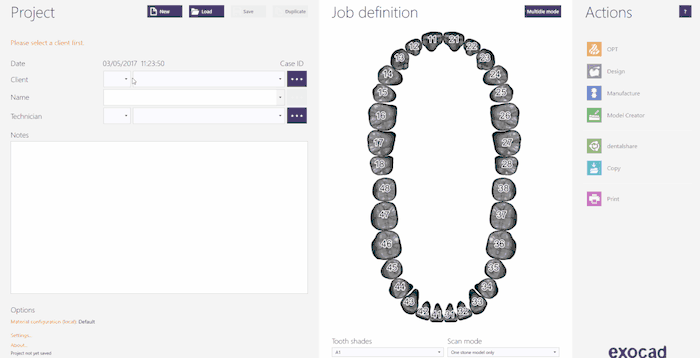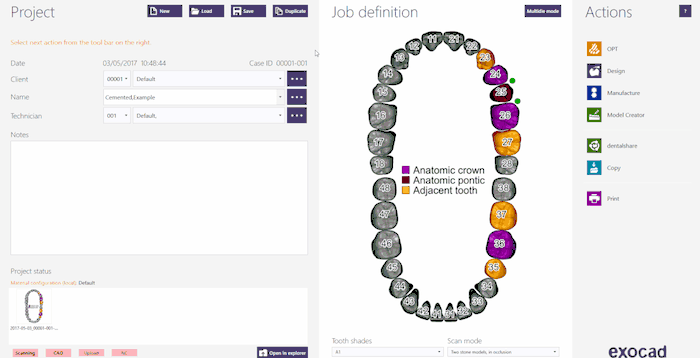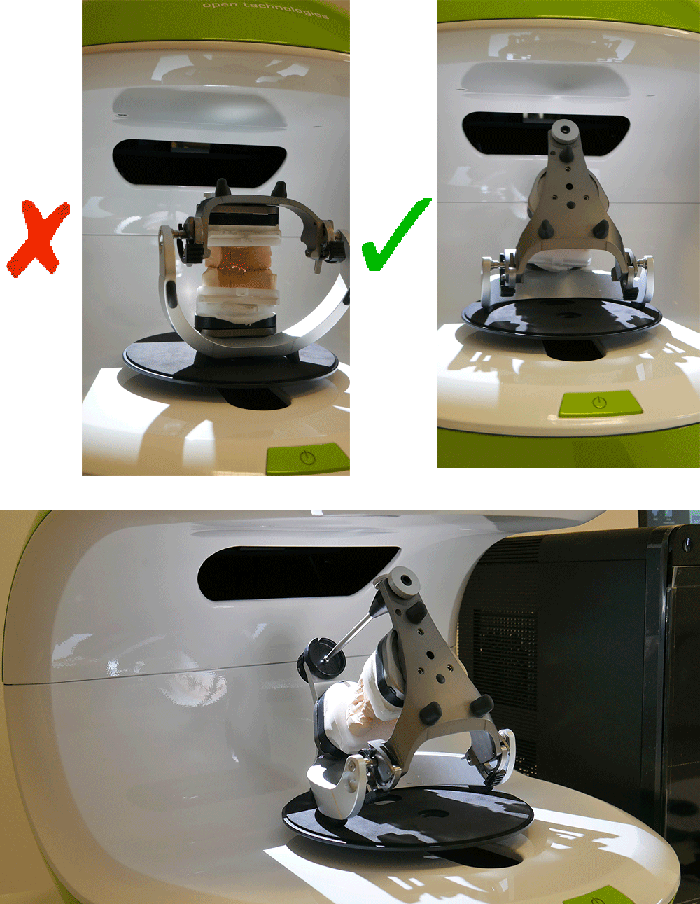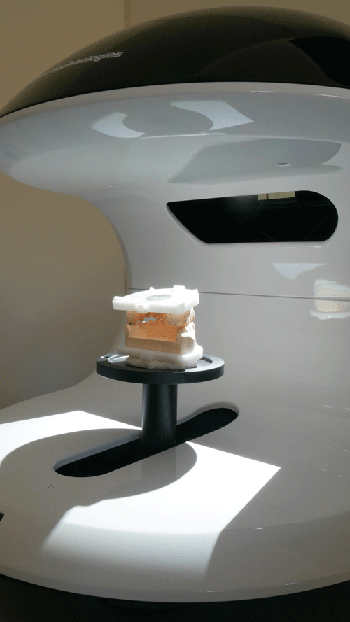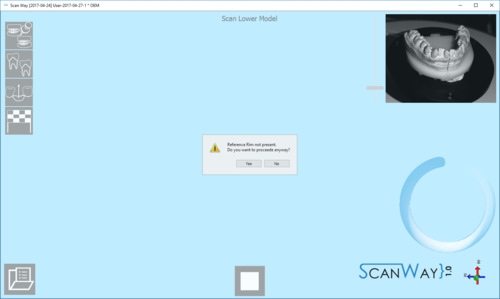Difference between revisions of "ExamplesCemented"
(Created page with "{{DISPLAYTITLE:Example: Cemented|noerror}} <translate> In this page will be followed and explained the wizard for scanning 2 models in occlusion with 3 dies (2 upper and 1 lo...") |
(No difference)
|
Revision as of 10:28, 3 May 2017
In this page will be followed and explained the wizard for scanning 2 models in occlusion with 3 dies (2 upper and 1 lower).
Contents
Project definition starting from Exocad
To create this project in Exocad, click on the DentalDB icon in your desktop. The project manager will open.
Fill in the project information, the kind of restoration that needs to be designed and the extra parameters. For this kind of project make sure that the Scan Mode is set on Two stone models in occlusion.
For further information on how to create projects in Exocad, visit the specific page on the Exocad Wiki!
Here is the project definition for our demo project:
Once the project has been defined just click OPT in the Actions section to launch the scanning software.
The first thing the scanning software shows is the project created in Exocad, if the project is correctly defined click the Accept Button ![]() .
.
Project definition starting from ScanWay
All projects can be defined in the scanning software as well, regardless the CAD that will be later on used to design.
Launch the scanning software double-clicking on the ScanWay icon on your desktop. The Welcome Page will open; to create the project click on the first icon.
For detailed information on how to define a project visit the specific page: Create a New Project.
Here is the definition of our demo project:
Both the project definitions described lead to the same wizard, which will be now followed step by step.
First Step: Articulator Scanning
The first step of any project that as been set to have both jaws, is the Articulator Scan.
For Articulator scan it is not necessarily meant that an Articulaotr needs to be scanned; the required scan is the acquisition of the occlusion either using the articulator on its specific support or putting the two models in occlusion on the model holder
If the user needs to scan an articulator, we suggest to tilt it backwards, to be able to get as information as possible. This is just a suggestion as not all articulators can be tilted.
In the live view of the scanning interface you can actually see that if the articulator is standing straight it will be difficult to acquire the occlusion properly.
On the other hand, as previously mentioned, it is also possible to scan the two models in occlusion on the normal model holder held together with rubber bands or wax if necessary.
Once the objects have been placed in the scanner (either the articulator or the models one on top of the other), the scan can be started with the Scan Button![]() . Once the scan is finished the result will be shown.
. Once the scan is finished the result will be shown.
For further information on the other available functions check the Scan Interface page.
Click ![]() to access the second step of the wizard.
to access the second step of the wizard.
Second Step: Lower Model
The first step of any project that as been set to have both jaws, is the Lower Model Scan. The models steps include two sub-steps: the actual scan and the edit of the acquired image.
Scan Step
Place the lower model on the model holder and click the Scan Button![]() . Once the scan is finished the result will be shown.
. Once the scan is finished the result will be shown.
This scan has been performed with the Reference Rim. Everytime the user launches a scan for models, dies or markers and the software recognises the reference rim has not been used the following message shows.
The user can therefore decide wether to cancel the scan, put the reference rim on the model holder and start a new scan, or to scan without using the reference rim. For information on the reference rim visit the Accessories page.
Click ![]() to access the second part of the Lower model step.
to access the second part of the Lower model step.
